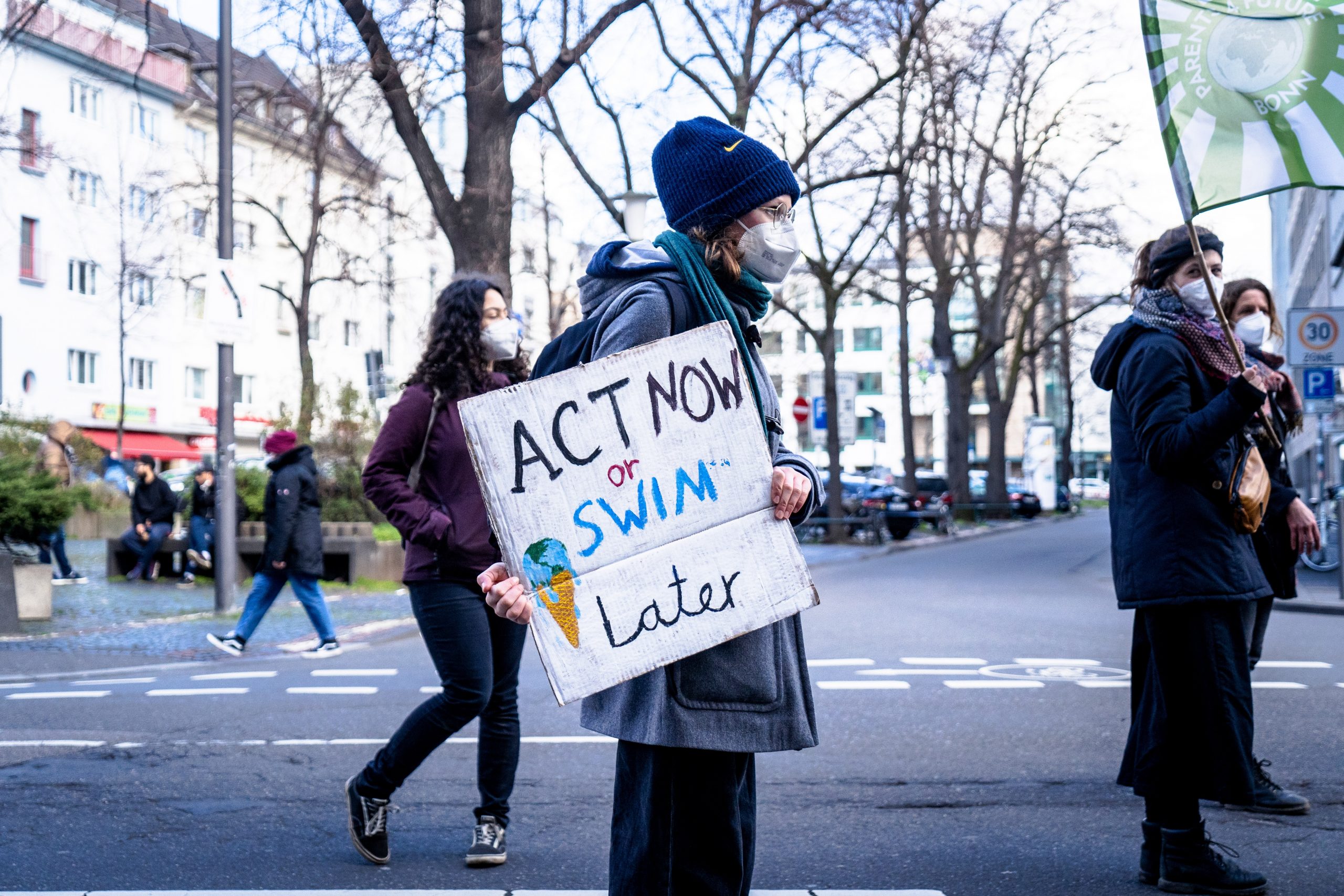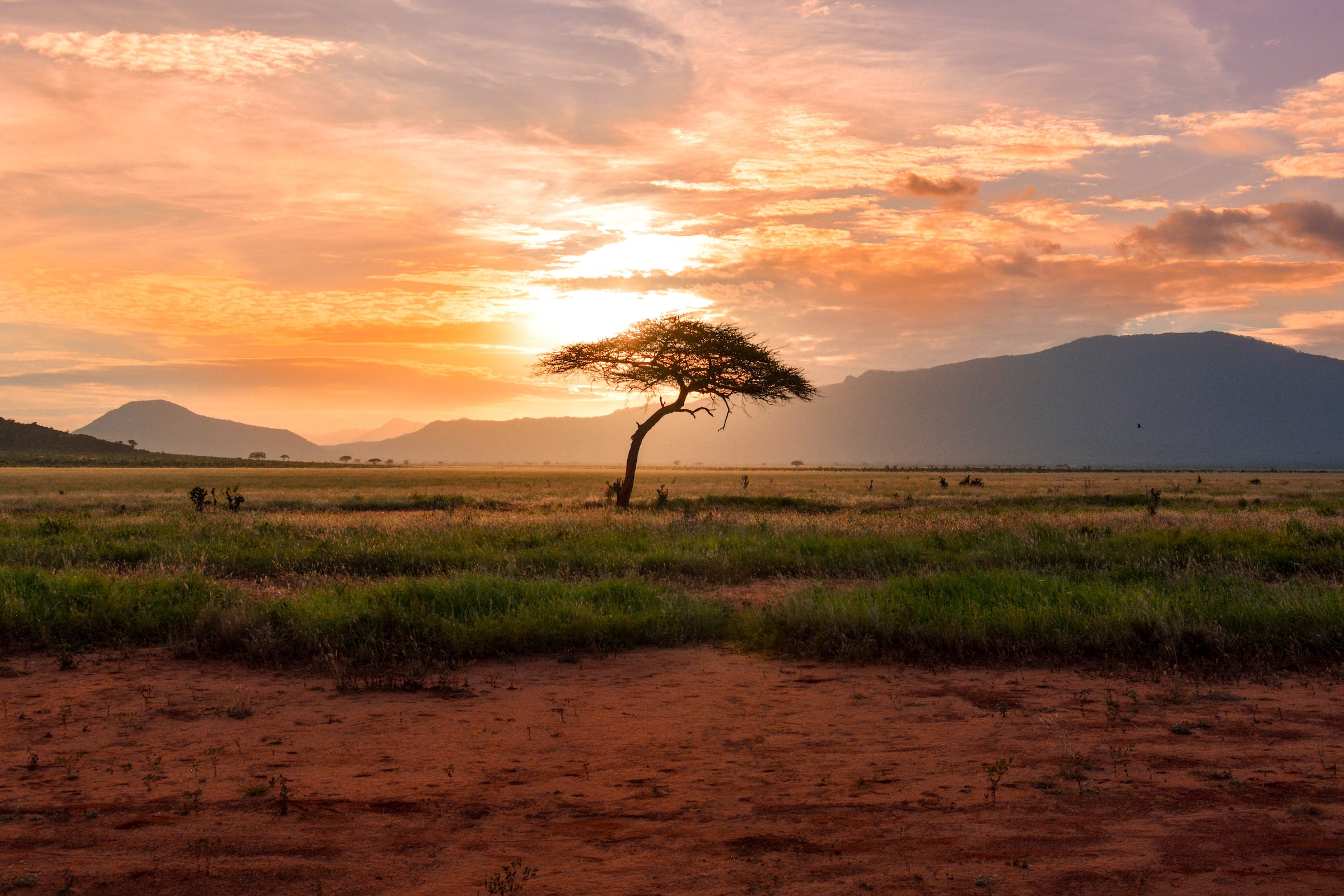The clearer our vision of what to expect from the future the better we can prepare for it. This involves not only developing predictive know-how and tools but also an ability to draw information from the past.
Climate researcher and modeling expert Zeke Hausfather walks us through the great progress that has been made in tackling the climate crisis, whilst also outlining the biggest challenges that lie ahead. His “cautiously optimistic” vision steers away from doomsday predictions and places the climate issue in the context of other global challenges, not least of which inequality.
However, Hausfather also explains that uncertainty over how the climate system will react to current and future emissions makes cutting emissions as fast as possible the absolute priority.
“The future doesn’t boil down to either a 1.5 degree Celsius future or an apocalyptic hellscape. Climate change is ultimately a matter of degrees rather than thresholds […] The single most important thing we can do is to take as rapid action as possible to reduce emissions,” states Hausfather.
Your climate change communication, spanning from explanatory pieces for Carbon Brief to an active and informative Twitter feed, often focuses on solutions rather than doomsday scenarios. Are you optimistic about the future?
Although I am cautiously optimistic about the future, I realize that huge challenges lie ahead and that we are still far off the pace in terms of meeting our climate goals and getting to where we want to be.
Even if it’s undeniable that we are not moving fast enough it’s also important to recognise that real and tangible progress has been made: global emissions have flattened out in the last decade compared to previous decades, the cost of clean energy has fallen, and global coal use peaked in 2013 with the International Energy Agency (IEA) even stating that it is in structural decline.
A decade ago most researchers would have agreed that a world where we doubled or tripled emissions by the end of the century was pretty plausible. Today that isn’t the case.
That said, if we want to limit warming to well below 2 degrees Celsius, we need to really hold politicians’ feet to the fire, and substantially increase the amount of policy interventions we have in the climate space.
We need to do much more to tackle climate change, but there is some good news for once.
In @Nature this week, @ClimateFran and I point out that falling costs of clean energy and strengthening climate policies move us away from the darkest climate futures: https://t.co/e6ZWNeddnd pic.twitter.com/ad0OY7AfU9
— Zeke Hausfather (@hausfath) April 13, 2022
What should we be prioritizing in relation to climate change?
I think we should be cognizant that today’s emissions are essentially leaving a debt for future generations to deal with and that the cheapest way to avoid climate change is to reduce emissions today.
The most recent IPCC report revealed that we can probably cut at least half of all of our emissions today for less than 100USD per tonne of CO2, and that the cost of cutting emissions will continue to decrease over time as we develop new technologies in sectors where we don’t have cheap solutions today.
The longer we wait the bigger the debt we’re handing down to future generations. The single most important thing we can do is to take as rapid action as possible to reduce emissions.
Do we have a clear vision of what the future has in store?
We’re definitely moving toward a world where we have a bit more certainty around the likely climate outcomes and – ignoring uncertainty in the climate system – our emissions are probably putting us somewhere around just below 2 degrees Celsius warming. But that is only if we really get our act together and get countries to meet their net zero goals. If we don’t do that, then the reality is we will be closer to 3 degrees Celsius.
Both these outcomes entail significant negative impacts on human and natural systems. Yet they are not necessarily the apocalypse, which is how some tend to portray them.
We can often set too high a bar for climate action and forget that it isn’t the only issue we should be addressing. There are countless problems that affect society, like extreme poverty and conventional air pollution for example. A good parallel could be pandemics such as COVID-19. They don’t literally threaten the human race with extinction, but they are still huge problems that we need to address for society to prosper.
We should treat climate change as a problem along these lines rather than this unique thing that’s going to lead to the end of the world unless we have a radical revolution in the next few years. That said, if we want to limit warming to 1.5 degrees Celsius then we do need rapid and radical action.
However, I don’t think the future boils down to an alternative between a 1.5 degree Celsius future and an apocalyptic hellscape. Climate change is ultimately a matter of degrees rather than thresholds. The 1.5 degree Celsius goal is ideal, but 1.6, 1.7 and 1.8 are also worlds where humans can survive and, to an extent, thrive, especially if we also solve a lot of our other problems such as inequality and other fundamental issues that plague humanity.
You talk about climate uncertainties. What are these and how will they impact our future climate?
Broadly speaking, when we are trying to project how much future warming the world is going to experience, we’re really dealing with three somewhat independent sets of uncertainties.
The first is one we can exercise direct control over, which is our emissions. We can decide how much CO2 and other greenhouse gasses we will pump into the atmosphere. However, the other two are climate uncertainties and therefore out of our control: climate sensitivity and the carbon cycle itself.
The former is how sensitive the climate is to our emissions. We have estimated that if we double the amount of CO2 present in the atmosphere, the world will likely warm somewhere between 1.5 and 4.5 degrees Celsius. In the most recent IPCC report we narrowed that range to between 2.5 and 4 degrees Celsius. However, this is still a fairly large uncertainty.
The latter regards uncertainties in the carbon cycle itself. Today, when we emit a tonne of CO2, about half of it is removed over the course of a century by the land and the ocean. If CO2 isn’t absorbed by these natural sinks, climate change would be twice as bad as it already is today. However, we are unsure by how much the ability of these carbon sinks to absorb our emissions is going to weaken as the world warms. If the weakening is on the high end of what we think it might be, we could end up with much higher CO2 concentrations.
These two uncertainties – climate sensitivity and the carbon cycle feedback – should further encourage us to reduce our emissions as much as possible. The closer we can limit warming to 1.5 degrees Celsius, the more we’re minimizing these tail risks.
Do you think the 1.5 degrees Celsius target is attainable?
The challenge with 1.5 degrees Celsius targets is that we’re already at 1.2, or even 1.3 degrees, depending on which temperature record you’re looking at. Therefore, 1.5 degrees Celsius is so close to current levels of warming that it puts us in a somewhat uncomfortable bind.
One statistic that I found eye-opening comes from the most recent IPCC report: Working Group Three examined 230 different climate scenarios that limit warming to 1.5 degrees Celsius by the end of the century, 221 of them overshot 1.5 degrees on the way there.
To make the math work for 1.5 degrees, you would need to either get all global emissions to zero in about 20 years or rely on larger and larger levels of negative emissions. Even if the US and Europe managed to reach net zero, which is highly unlikely, it’s even harder to imagine a world where China, India, Sub Saharan Africa, Indonesia, etc. all get their emissions to zero in the next 20 years.
This leads to a reliance on removing more carbon than we’re adding to the atmosphere, to the point where some models are removing half as much CO2 from the atmosphere as we’re emitting today to limit warming to 1.5 degrees Celsius. This isn’t a particularly realistic scenario.
At the same time, I’ve become a little bit more optimistic about our ability to remain at around 2 degrees Celsius, in part because of all the actions that countries are undertaking which have led to faster than expected declines in the cost of things like solar panels, batteries, electric vehicles, etc. There is just much more space for solutions in a 2 degrees Celsius future warming scenario.
Stuff like this worries me. Selling carbon credits for changing ag practices is deeply problematic given huge uncertainties in how much will actually be removed. The fact the article highlights no-till which does not actually remove carbon is a bad sign. https://t.co/87wRy1hz6G
— Zeke Hausfather (@hausfath) July 11, 2022
What role do you see for carbon dioxide removal in the future?
There are four different roles for carbon dioxide removal (CDR). The first is there are some emissions that we’re never going to fully get out of the economy for one reason or another.
We can probably cut our emissions by 90%, globally, but that last 5-10% is going to be exceptionally hard to prevent and there’s going to be a point at which it actually becomes cheaper to do CDR instead. So, we’re probably talking about at least 2 billion tonnes of CO2 removal every year to make up for residual CO2 emissions in the system. And that’s how we get to net zero instead of absolute zero.
The other part of the equation regards non-CO2 greenhouse gasses. It’s much harder to get methane and nitrous oxide all the way to zero. These residual emissions will need to be counterbalanced with CDR.
The third use of CO2 removal is the question of overshoot. Once you get CO2 emissions to zero the world won’t automatically start cooling, it just stops warming. The only way to reduce global temperatures after overshoot is through CDR.
CDR is also an important hedge against climate system uncertainty. Once we know the exact magnitude of climate system uncertainties – and hence what climate sensitivity and the carbon cycle feedbacks actually are – it’s going to be too late to avoid their consequences. CDR can act as a tool to deal with unexpected outcomes.
Finally, CDR can also help provide climate reparations. If you want to create a larger carbon budget for poorer countries the only real way to do that is for rich countries to pay to remove some of their past emissions. However, the geopolitics of that become very thorny, as we can see with current politics around green financing mechanisms for example.
How can we improve the way we communicate climate issues?
We often get very focused on either the very high-level impacts of climate change or the very nitty-gritty side of personal responsibility and tend to forget the system impact side of things.
We should take more time to discuss how people can get involved in the solutions. And I don’t just mean buying electric cars or alternative diets. I’m talking about voting, organizing politically, reaching out to decision-makers and getting out on the streets. This aspect is absent in a lot of public discussions which tend to focus on the global impacts of climate change. We need people to mobilize and become politically active.
 Zeke Hausfather is a climate scientist and energy systems analyst. His research focuses on observational temperature records, climate models, and mitigation technologies. He has worked as a research scientist with Berkeley Earth, was the senior climate analyst at Project Drawdown, and the US analyst for Carbon Brief. He is now climate research lead at Stripe, where he is focused on helping scale permanent carbon removal technologies.
Zeke Hausfather is a climate scientist and energy systems analyst. His research focuses on observational temperature records, climate models, and mitigation technologies. He has worked as a research scientist with Berkeley Earth, was the senior climate analyst at Project Drawdown, and the US analyst for Carbon Brief. He is now climate research lead at Stripe, where he is focused on helping scale permanent carbon removal technologies.






